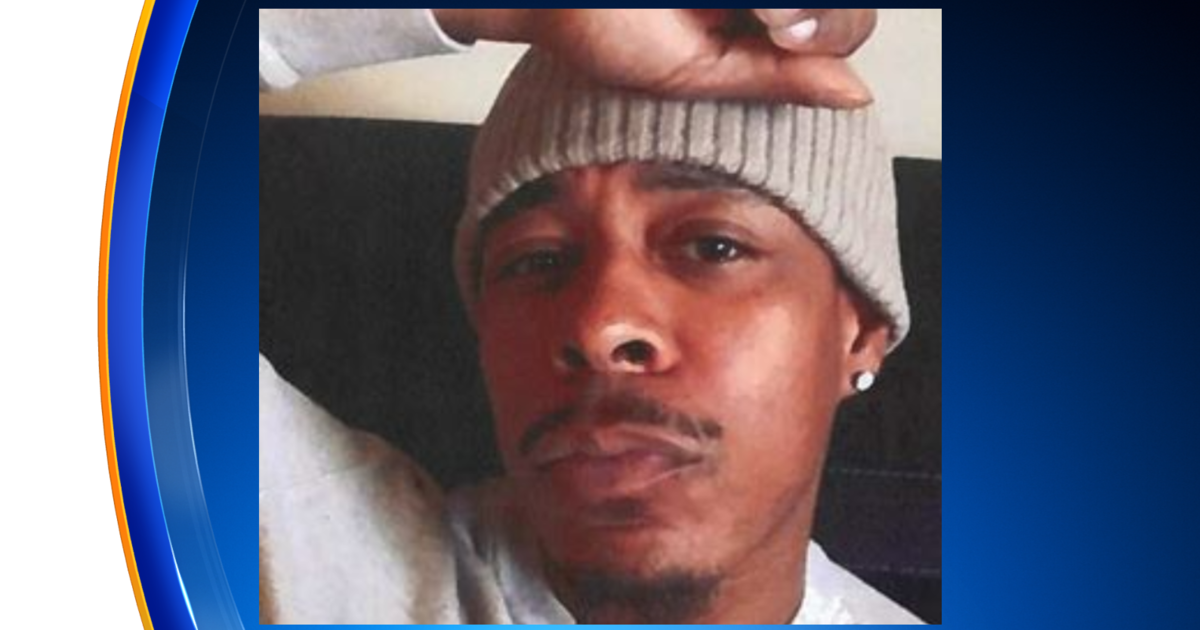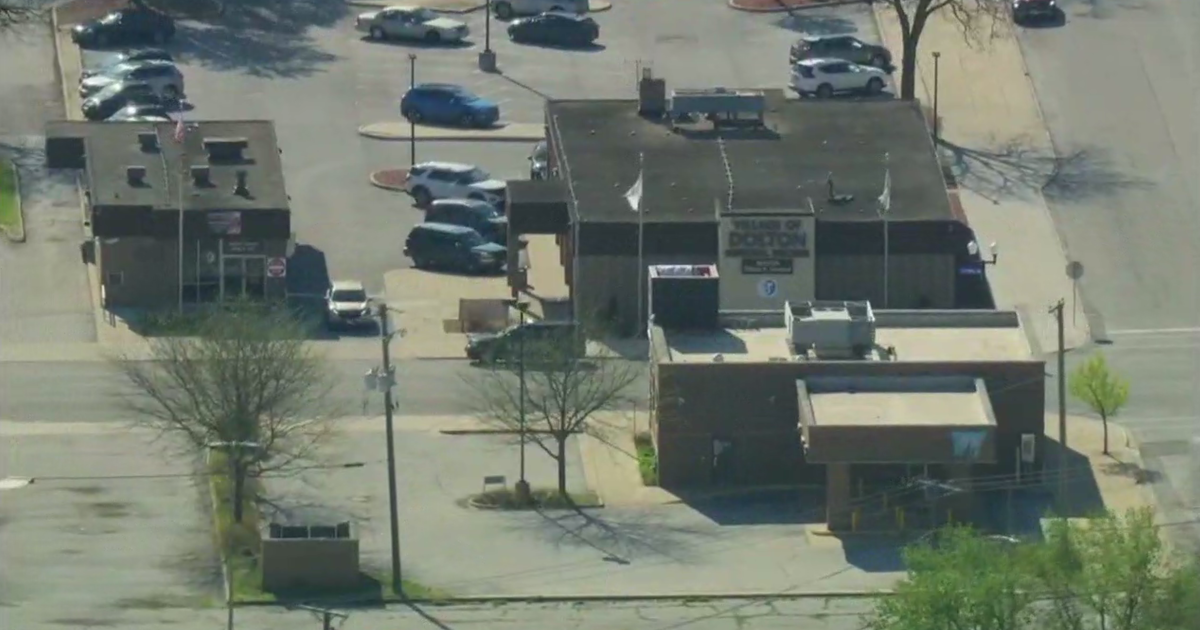Bitter Cold Coming After Snowy Week
UPDATED 02/08/11 11:13 p.m.
CHICAGO (CBS) -- As if the past week in Chicago hadn't been enough to make one wish Mother Nature would abolish winter at once, bitter and dangerous cold is now coming.
Meanwhile, the snow is not over for some parts of the Chicago area either.
CBS 2 Meteorologist Megan Glaros says a polar air mass is bearing down on Chicago.
As of 11 a.m., the temperature was only 11 degrees at O'Hare International Airport, 14 degrees at Midway Airport, 8 in Aurora and DeKalb, and 3 in Peru, Ill.
But the wind chills made conditions feel much colder. The wind chill was minus 3 at Midway, minus 6 at O'Hare, minus 9 in DeKalb, and minus 13 in Peru.
But that might seem tropical compared to the wee hours. At 6:15 a.m., it was minus 1 in Aurora with a wind chill of minus 20, and 0 in DeKalb with a wind chill of minus 19.
On Tuesday night, the low is expected to drop to minus 1 in Chicago. Come Wednesday, the high is only 11, and the low drops to minus 5.
As the temperatures drop, steady winds of 10 to 15 mph will hit the area, creating dangerously cold conditions. A wind chill advisory is in effect from 9 p.m. Tuesday until noon Wednesday for most of the Chicago area.
Meanwhile, Glaros says Chicago and Cook County could see some lake effect snow on Tuesday.
A lake effect snow advisory is in effect until noon Wednesday for Lake, Porter, LaPorte and St. Joseph counties in Indiana and Berrien County in Michigan.
In Northwest Indiana, total accumulations of 2 to 5 inches of new snow are expected some areas. Snow might fall at a rate of 2 inches per hour for periods of time, Glaros said.
Poor visibility and dangerous driving conditions are to be expected.
City Seeks To Keep The Vulnerable Safe
As the mercury plummets, city officials are springing into action to help Chicagoans battle the elements.
As CBS 2's Susanna Song reports, the city says it has a plan to make sure the vulnerable – whether homeless or elderly – can stay warm during the deep freeze.
As temperatures drop for the next 60 hours, Chicagoans such as Charon Anderson will have to be cautious.
"I've got on thermals; my bonnet," she said.
"I have on my long-johns and my pants; my boots on; my hats and gloves on -- I'm going to stay warm," said Jeannette Moore. "My house is warm."
But not everyone has a warm place to call home. Already by 11 a.m., the Garfield Warming Center at 10 S. Kedzie Ave. was seeing increased traffic.
"This is prime time for us," said city Human Services director Benjamin Alonzo. "We're geared up for this week, but we prepared for the winter in the fall, and so we're geared up and we're ready to go."
Alonzo says his department is fully staffed, and sent out several workers to reach out to the homeless.
"What we're expecting is numbers increasing in our warming centers," Alonzo said. "We average here about 100 persons daily, and when it gets cold like this, it may increase to 130, 140," he said.
Alonzo said about two thirds of the people his department services during cold snaps are homeless. The remainder are senior citizens, or people experiencing a crisis such as a power outage or fire.
For everybody, WBBM Newsradio 780's Bernie Tafoya reports city officials are advising extra precautions. First, they say you should stay inside as much as you can.
LISTEN: Newsradio 780's Bernie Tafoya reports
Podcast
If you do go out, be sure to cover up – head, hands and feet, and be sure to wear several layers of loose-fitting clothing.
The city had salt trucks out Monday night and Tuesday morning on both main and side streets, preparing for the temperature drop into the single digits.
The Illinois Tollway planned to launch its "Zero Weather Patrols" on Tuesday night to assist motorists during the deep freeze.
The service, implemented when temperatures or wind chills drop below zero, dedicates hourly patrols to search for motorists stranded in disabled vehicles or in response to calls made to *999, Tollway dispatch or Illinois State Police District 15.
The Tollway will activate Zero Patrols at 8 p.m. Tuesday until Wednesday morning, when temperatures are expected to rise above zero. The Zero Weather Patrols are expected to be implemented again overnight on Wednesday, as temperatures are again expected to drop below zero overnight.
"With temperatures dipping well below zero tonight and tomorrow night, we want to assure customers that that we'll be there to help with a tire change, jump start or call for service," Tollway Executive Director Kristi Lafleur said in the release.
There are a minimum of 11 Zero Weather Road Patrols, at least one from each maintenance garage section. The Zero Weather Patrols consist of crew cab trucks equipped with arrow boards for directing traffic around accidents or stranded vehicles and enough room to accommodate up to five passengers if motorists need to be transported to a Tollway maintenance garage, toll plaza or Tollway oasis.
Motorists who do get stranded should turn on their emergency lights and stay in their vehicles until help arrives. Cell phone users should call *999 for roadway assistance or to report other motorists pulled over on the side of the road.
An Epic Week For Snow
All this comes after a historic week when it comes to snowfall. The blizzard on Tuesday and Wednesday of last week dumped 20.2 inches of snow on the city, and left motorists stranded on Lake Shore Drive for up to 12 hours until up to 1,000 people abandoned their cars.
The blizzard last week ranked No. 3 of all time. By Sunday, when another 2.6 inches of snow fell, the total snowfall for the season topped out at 50.1 inches.
More than 3 additional inches of snow fell at O'Hare International Airport after noon Monday.
Some crosswalks in the city remained unshoveled, leaving pedestrians even on major streets to step in past footprints to cross the street without getting their pants wet.
This is the first time in city weather history that there have been four consecutive seasons of 50-inch snowfall.
The last three recent winter snowfall totals were 60.3 inches in 2007-08, 52.7 inches in 2008-09, and 54.2 inches in 2009-10.
Facts About Frostbite And Hypothermia
Temperatures this low can pose a risk for frostbite and hypothermia. Both are serious conditions that can strike easily in extreme cold.
• When blood circulation is impaired by frigid temperatures, frostbite occurs. The first symptoms are a pale appearance and a tingling or stinging sensation, followed by a feeling of pain and discomfort, then numbness. This is a mild form of frostbite, and can be treated by getting to a warm place and trying to bring the affected area to room temperature or a little higher. This can be done by a process as simple as putting frostbitten hands under your arms or using lukewarm water to soak them. But hot water should never be used, and the skin mustn't be rubbed. Warming must be accomplished gradually.
• It is not always easy to predict the severity of frostbite, since it can be several days before the extent of the damage is seen. Skin with mild frostbite turns yellow or grayish, and the affected skin remains soft and pliable, but turns red and flaky as it thaws. But in more severe cases, blisters or sores might develop after one or two days. Never break the blisters.
• A deeper frostbite will turn purple or blue upon thawing. Anyone with those symptoms must seek medical attention immediately. Treatment will usually involve an antibiotic cream for the skin. But the most serious consequence of frostbite may be amputation.
• Hypothermia is a contributing factor in more than 25,000 deaths in the U.S. annually. Watch out for such symptoms as stiff muscles, shivering, a puffy or swollen face, cold skin, slowed breathing, impaired physical coordination, and mental confusion and irritability. If you are experiencing such symptoms, get to warm shelter and call 911 for emergency aid.
• Call 911 if you see a hypothermia victim, and be careful in handling the person, since the heart is extremely weak when the body is cold. The hypothermia victim should be insulated with blankets or any available covering – even newspapers – but should never be re-warmed using hot water bottles, electric blankets, or other thermal heat sources. The victim should not get any food or drink, and the feet should not be elevated. That can cause cold blood to flow into the core of the body and lessen what heat may be left.



